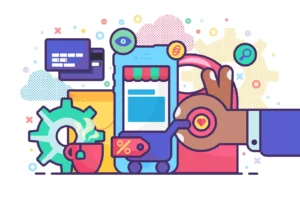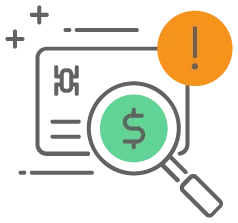
TABLE OF CONTENTS
Due to Square’s growing popularity in the payments industry, the occurrence of Square chargebacks has become an increasingly frequent problem for merchants. For small businesses, Square is a top choice for accepting payments—its user-friendly interface and easy setup allow merchants to start processing credit cards within minutes. However, this well-known payment platform has a low tolerance for chargebacks and high-risk businesses. This article illustrates Square’s chargeback process, how it protects its clientele with Square Chargeback Protection, and what merchants can do to avoid chargebacks altogether. Let’s dive in!
What Is a Square Chargeback?

A Square chargeback occurs when a customer successfully disputes a purchase they made through Square. After a customer asks their bank for a reversal, the issuing bank starts the chargeback process by notifying Square. From there, a mini-court case plays out where the bank hears evidence from both sides, and ultimately chooses the rightful recipient for the funds.
Square chargebacks can happen for a number of reasons, many of which are out of your control. Some instances inciting a chargeback include a stolen credit card, unreceived items, or a product quality issue. Regardless of the situation, chargebacks can be incredibly bothersome to deal with.
How Do Square Chargebacks Work?
Chargebacks can be extremely frustrating for merchants, but understanding how the process works from top to bottom is essential in preventing them.
When a cardholder believes there has been a wrongful charge on their credit card, the chargeback process is initiated upon the cardholder notifying their bank or credit card company. The bank or credit card company then notifies Square. Initially, if the merchant has enough money in their Square account to cover the chargeback amount, said funds are put on hold until a resolution is rendered. However, if the merchant doesn’t have enough funds, Square debits the merchant’s associated bank account.
At this point, Square’s dispute resolution team reaches out to the merchant for specific information about the transaction. The merchant can accept the chargeback or fight it. If they accept it, they will issue a refund to the customer and usually incur a chargeback fee.
If they fight the chargeback, they need to provide additional information supporting the legitimacy of the transaction, such as receipts, invoices, shipping confirmations, or customer communications. Once this information is evaluated, the issuing bank decides which party wins the chargeback.
How Does Square Protect My Business Against Chargebacks?
Most businesses accepting credit cards, regardless of the processor, are likely to experience chargebacks from time to time. Fortunately, Square provides a few helpful tips to prevent chargebacks on its website. They advise you to keep purchase records, invest in customer service, require delivery confirmation, and also consider adding Square Risk Manager to your software. They also offer automatic fraud monitoring services for all online merchant accounts.

Dispute Prevention
Square tries to limit the number of chargebacks its users incur through its dispute prevention software called Square Risk Manager. The software assesses risky payments, blocks repeat fraud, and creates alerts that automatically control when you can accept payments.
This tool also detects suspicious activity during the checkout process. If any suspicious or potentially fraudulent activity is detected, the merchant receives an immediate notification from Square. The software also watches out for IP addresses located far from the shipping address, mismatched address information, and inconsistent activity. Once you receive the notification, you have the option to either cancel the order or review the purchase to make the judgment call.
Although every fraudulent purchase may not be caught, dispute prevention does help to stop fraud before it happens.

Seller Protection
Square helps to protect its sellers by fighting fraud, managing disputes, and protecting customer data. The platform offers best practice guides for accepting credit cards, preventing disputes in the first place, and protecting yourself from fraudsters. Square also offers secure payment options so hackers can’t obtain private information about you or your customers. Additionally, two-step verification is required each time you log in as an added layer of protection, and PCI compliance is required upon opening your account.
Mitigation is the best way to protect your business from a chargeback. Make sure to clearly outline your refund and return policies, track customer purchase history, and promptly process refunds and returns. (The longer a customer has to wait, the more likely they are to file a chargeback!)

Fraud Protection
Square recommends merchants take these specific fraud protection steps to keep their business safe:
- Keep detailed records of each sale. Having records of each sale—including the goods purchased, the customer’s name, address, and email address—can help you prove the sale was properly executed.
- Have good customer service. Open and responsive communication is vital. It’s the best way to ensure customers are happy and aware of what to expect. Also, it’s always wise to keep communication on file in case of a dispute.
- Utilize fraud prevention software. There are many software options a company can add to its toolkit to verify customer information associated with a purchase. Having an additional layer of security is an easy way to verify the customer is who they say they are. However, too much or untargeted protection can increase the occurrence of false declines—so it’s important to find a balance with which you’re comfortable.
- Track delivery. By tracking delivery, you can ensure each item arrives at its intended destination. Square also recommends requiring a signature at the time of delivery for expensive items.

Liability Relief
Square doesn’t offer its own chargeback liability relief, but they do help out in the process. As discussed earlier, Square takes on an intermediary role during the chargeback process. Once Square notifies the merchant of a chargeback, they request information supporting the transaction on the merchant’s behalf. This information typically includes proof of delivery, the business’s return policy, any communications between the seller and the buyer, and the product description. However, if the result is not in the merchant’s favor, Square cannot do anything more to stop the chargeback.
Square Chargeback & Dispute Timelines

When a Square chargeback is filed against you, the platform notifies you as soon as possible. They also request any relevant information that will help them provide evidence proving the charge was legitimate. However, the issuing bank can take up to 90 days to make its final decision. And if a customer files a further appeal, the chargeback dispute could go on for another 60 days. During the entirety of the dispute and appeal processes, the money in question remains frozen.
Another important aspect of processing with Square is that it only services businesses with a chargeback ratio under 1%. Square is known to shut businesses down that go over 1%. Also, Square doesn’t accept most high-risk business types, which can be confusing because of its auto-approval system. This often leads to held funds and no payment processing capabilities.
Square Chargeback Protection
As mentioned, Square Risk Manager is Square’s chargeback protection program. It provides insight into fraudulent patterns, allows you to set custom rules, and send you alerts to manage your risk levels. The pricing for Square Risk Manager is an extra six cents on all transactions.
Square Chargebacks: Final Thoughts
Square chargebacks can be a nuisance for businesses utilizing the platform as their payment solution. Though Square does provide specific guides on how to prevent chargebacks from happening, once they occur, Square doesn’t have much patience and can shut your business down or hold essential funds. However, some payment processors handle chargebacks more sufficiently than others. Uniquely experienced and resourceful in mitigating chargebacks, high-risk payment processors supply the chargeback protection software you need to help you get ahead of chargebacks!
Chargebacks causing you pain?
Consider us your chiropractor!
Pain Relief
FAQs About Square Chargebacks
What qualifies for a chargeback with Square?
According to Square, besides fraudulent charges, there are three main chargeback causes:
- Goods or services were not as described or were defective.
- Goods or services were not received or were not rendered.
- The customer requested credit or their credit card was not processed.[1]Square. How to Protect Your Business from Non-Fraud Chargebacks”. Accessed November 16, 2022.
What happens if I do not respond to a Square chargeback?
If you do not respond to a Square chargeback, Square assumes you’re at fault for the chargeback and liable for all Square processing fees accrued, as well as applicable chargeback fees.
How can I offer a refund using Square?
If you would like to offer a refund on Square, follow these instructions:
- Go to the transactions settings in your Square account.
- Click “refund” on the payment you would like to refund.
- Click the specific item or the whole purchase will be refunded.
- Select why you are issuing a refund.[2]Square. “How to Offer a Refund“. Accessed November 16, 2022.





